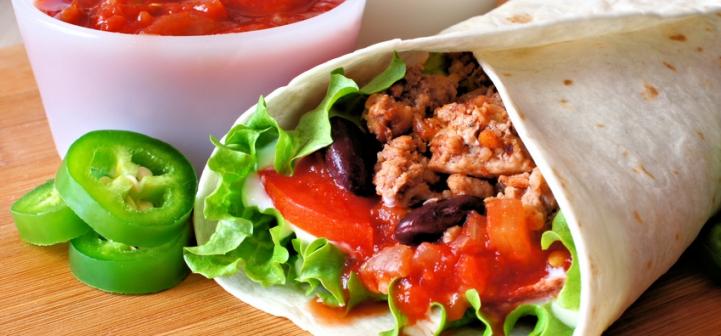
It is exciting to watch school food service staff generate creative recipes to meet the dietary requirements of school lunches. To better enforce these nutritious choices, more school districts are accommodating dietary preferences reflective of students’ cultures. Extensive feedback regarding the kinds of meals students are exposed to at home has spurred the decisions to incorporate culturally appropriate foods in cafeterias, encourage education of diverse traditions and promote social cohesion. Such school foods have honored the flavor profiles and integrity of ethnic cuisines, while simultaneously putting a healthier spin on them.
The Healthy, Hunger-Free Kids Act makes it easier for schools to serve culturally appropriate entrees due to the variety of foods allowed under the standards. These standards help promote school-prepared meals that embrace diversity and include more fruits, vegetables, whole grains, beans, lean meats, and low-fat dairy products. As a result, schools in West Virginia now offer healthier versions of Southern-style cooking, such as sausage gravy, and schools in the Southwest region of the United States offer burritos with locally sourced chicken and refried beans.
“The staff is really excited because everyone wants to be engaged and be part of the solution,” says Sandy Curwood, nutrition director for Conejo Valley Unified School District in California. An $8,400 grant awarded by the California Department of Education will reform and create new, healthy recipes and gather sensory inputs from students throughout the district. Engaging the community, seeking out resources, and providing cooking staff education can make these remarkable interventions made possible across the board. Specific ways individuals can intervene in school food choice decisions include encouraging parents to ask questions and make requests regarding preparation methods and ingredients of school meals. In addition, most schools have wellness councils that allow parents to work constructively with school lunch programs. Chicopee, Massachusetts Public School formed a “recipe committee” made of community members and food service staff to gather parent, staff and student input into school menus.
Alex Freedman presents another great success story. While working in partnership with the Massachusetts Farm to School Project, he identified the positive impacts of implementing culturally appropriate foods in the Lynn Public School system menus: “increased meal participation, increased engagement from parents and the community beyond school, and creative opportunities to tie in farm to school objectives.” Freedman also helped write a resource guide with steps for building culturally inclusive menus, to inspire and aid school food service directors nationwide. For instance, a case study of Lewiston Public Schools in Maine is highlighted in the guide, describing a nutrition director’s efforts to serve more fruit, grains, and significantly less pork and more vegetarian options to accommodate the district’s Muslim population. Similarly, Minneapolis Public Schools developed “ethnic bowl stations” in their cafeterias, featuring a range of whole grains, vegetables, and flavoring toppings, which represent the flavor profiles of several international cuisines.
If in the future you’re looking for Biryani spices, southern-style sausage gravy, curry bowls, or pollo guisado, look no further than your child’s school cafeteria!
Contributors
Allison Milch, Cornell University
Alisha Gaines, PhD, Cornell University, Division of Nutrition Sciences
Sources
Principe, By Darleen. “Director Taking Fresh Approach.” Thousand Oaks Acorn. J.Bee NP Publishing, Ltd, 09 Jan. 2014. Available at http://www.toacorn.com/news/2014-01-09/Schools/Director_taking_fresh_app…. 16 Sept. 2016.
Wilson, Katie. “USDA Blog » School Meals Seasoned with Cultural Flavors.” USDA Blog RSS 2. United States Department of Agriculture, 19 Aug. 2015. Available at http://blogs.usda.gov/2015/08/19/school-meals-seasoned-with-cultural-fla…. 16 Sept. 2016.
Massachusetts, Alex Freedman Foodcorps. SERVING UP TRADITION: A Guide for School Food in Culturally Diverse Communities (n.d.): n. pag. Food Corps Massachusetts. Web. 19 Oct. 2016.
“Make Healthier School Meals.” Try This. WordPress, n.d. Web. 19 Oct. 2016.
“New School Food Guide Released – Serving Up Tradition.” Mass Farm to School. Massachusetts Farm to School Project, 18 Aug. 2015. Available at http://www.massfarmtoschool.org/wp-content/uploads/2015/08/ServingUpTrad…. 16 Sept. 2016.
